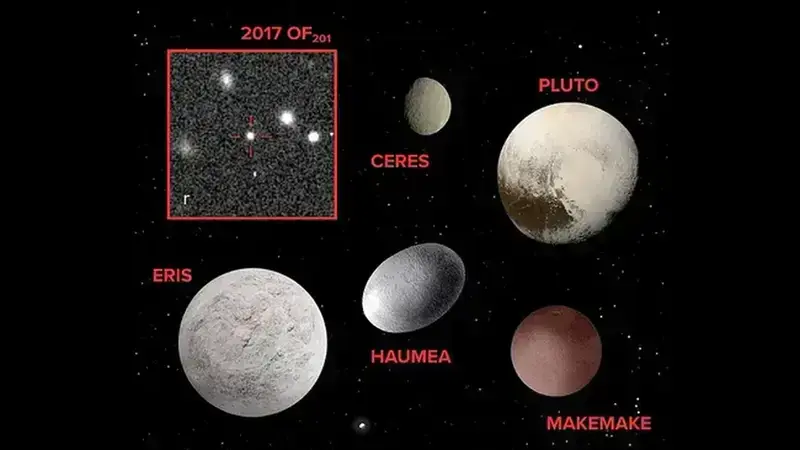Astronomers have announced the discovery of a new dwarf planet. planets in the Solar System, named 2017 OF201. Researchers tracked its movement for seven years using powerful ground-based telescopes located in Chile and Hawaii.
The discovery was confirmed by the Minor Planet Center of the International Astronomical Union. The unknown celestial body was found far beyond Neptune, which is the last of the eight planets in the Solar System (the most distant planet from our star). The object 2017 OF201 follows an extremely elongated orbit, completing one revolution around the Sun every 25,000 Earth years.
The dwarf planet, hiding far beyond the orbit of Neptune, has a diameter of about 700 kilometers, the publication reported. Live Science The nearest point to Sun The object 2017 OF201, during its orbit, is located at a distance of about 45 astronomical units. This is 45 times greater than the distance from the Earth to the Sun. After studying the trajectory of the newly discovered planet, astronomers calculated that its last closest approach to the Sun was in 1930. By the way, it was during that time that scientists discovered the most famous dwarf planet in the Solar System, Pluto.
Meanwhile, the farthest point of the object 2017 OF201 from our star is located at a colossal distance of 1600 astronomical units.

What else did the scientists report?
“Perhaps this object was initially ejected into the Oort Cloud, the most distant region of our Solar System, and then sent back,” suggested co-author of the study Sihao Cheng, an astrophysicist at the Institute for Advanced Study in Princeton, USA.
“The planet 2017 OF201 spends only one percent of its orbital time close enough to us to be detected,” the scientist said. According to him, the presence of this object raises hopes that there may be around a hundred other objects in the Solar System with similar orbits and sizes. It’s just that these planets are too far away.
The discovered object challenges the theory of a possible Ninth Planet. Astronomers suggest that it could be orbiting very far beyond Neptune, influencing the orbits of some objects located there with its gravity. However, researchers believe that 2017 OF201 does not fit into this model. They think that if the Ninth Planet existed, it would have quickly ejected the recently discovered dwarf planet from the Solar System. Further observations are needed for a better understanding of these potential interactions, the scientists noted.
“Although advancements in telescope technology have made it possible to explore distant corners” Universe “We still have a lot to learn about our own Solar System,” noted Sihao Cheng.
